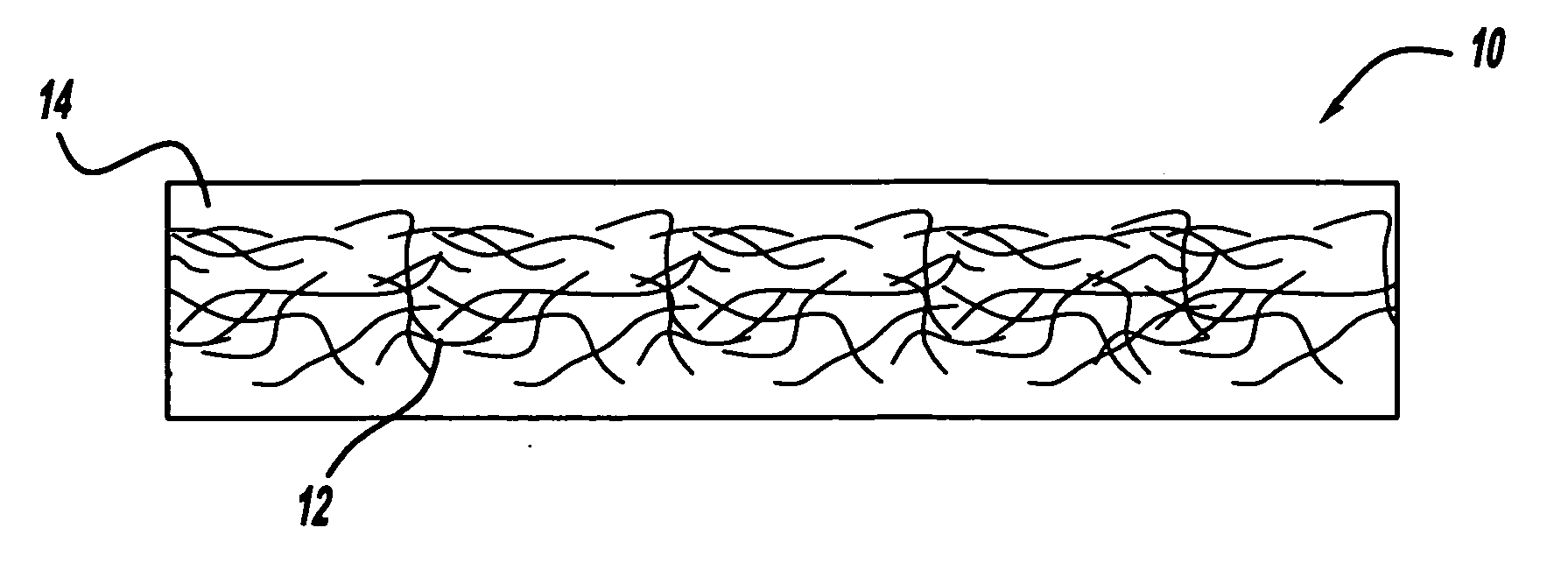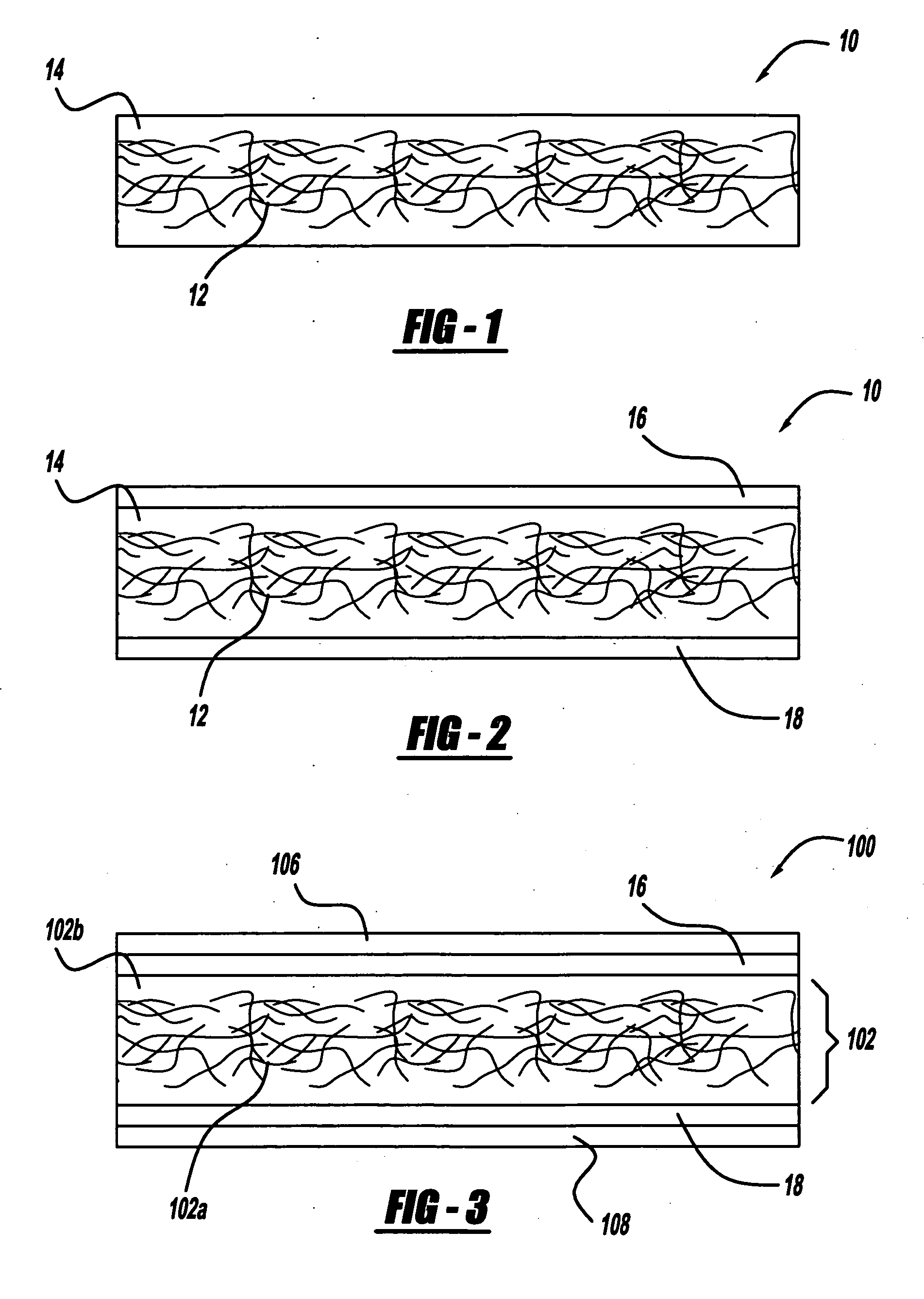Natural fiber as core material in composite sandwich structure
a composite sandwich and natural fiber technology, applied in the field of composite sandwich structures, can solve the problems of requiring higher end processing equipment and therefore higher cost, and other types of materials that cannot be formed easily, and the forming process lengthens the cycle tim
- Summary
- Abstract
- Description
- Claims
- Application Information
AI Technical Summary
Benefits of technology
Problems solved by technology
Method used
Image
Examples
Embodiment Construction
[0017] Referring to FIG. 1, there is shown a core component generally shown at 10. The core component 10 includes a natural fiber portion 12 and a binder portion 14. In accordance with one aspect of the present invention, the natural fiber portion 12 is comprised of a mat, a sheet-like format, or loose fibers. In accordance with one aspect of the present invention, the natural fiber portion 12 and the binder portion 14 are combined together, either partially or fully, so as to form a substantially homogenous material.
[0018] In accordance with one aspect of the present invention, the natural fibers suitable for use in the practice of the present invention can be separated into three broad categories: (1) bast fibers such as but not limited to hemp, flax, kenaf, ramie, jute, and / or the like; (2) leaf fibers such as but not limited to henequen, abaca, and / or the like; and (3) seed fibers such as but not limited to cotton and / or the like. However, it should be appreciated that any type...
PUM
| Property | Measurement | Unit |
|---|---|---|
| Structure | aaaaa | aaaaa |
| Polymeric | aaaaa | aaaaa |
| Homogeneity | aaaaa | aaaaa |
Abstract
Description
Claims
Application Information
 Login to View More
Login to View More - R&D
- Intellectual Property
- Life Sciences
- Materials
- Tech Scout
- Unparalleled Data Quality
- Higher Quality Content
- 60% Fewer Hallucinations
Browse by: Latest US Patents, China's latest patents, Technical Efficacy Thesaurus, Application Domain, Technology Topic, Popular Technical Reports.
© 2025 PatSnap. All rights reserved.Legal|Privacy policy|Modern Slavery Act Transparency Statement|Sitemap|About US| Contact US: help@patsnap.com


